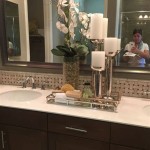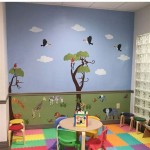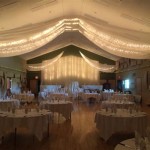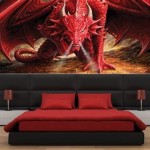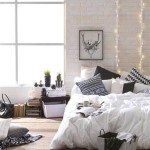Home Decor Item Ideas: Enhancing Living Spaces
Home decor encompasses a broad spectrum of items and techniques utilized to personalize and aesthetically enhance living spaces. These items are employed to reflect individual tastes, create specific atmospheres, and optimize the functionality of the home. The selection of decor items is a highly personal process, influenced by factors such as budget, architectural style, personal preferences, and prevailing design trends.
This article will explore a range of home decor item ideas, focusing on how they contribute to the overall ambiance and functionality of different areas within a home. Understanding the principles of design and how different elements interact is crucial in creating a cohesive and visually appealing living environment.
Textiles: Adding Warmth and Texture
Textiles play a pivotal role in home decor, imbuing spaces with warmth, color, and texture. They are versatile and can be easily interchanged to reflect seasonal changes or personal style updates. Key textile elements include:
Curtains and Draperies: Beyond their functional purpose of providing privacy and light control, curtains and draperies can significantly impact the aesthetic of a room. The choice of fabric, color, and style should complement the existing decor. Heavy drapes can create a sense of formality and luxury, while sheer curtains allow for natural light and a more casual feel. Consider the length of the curtains; traditionally, they should either reach the floor or slightly puddle for a more dramatic effect. Avoid curtains that are too short, as they can make a room feel awkward and unfinished. Also, it’s important to consider the type of heading (e.g., grommet, pleat, rod pocket) as it influences the way the curtains hang and the overall look they provide.
Rugs: Rugs serve as anchors for furniture arrangements and provide a foundation for the overall design scheme. They define spaces within a larger room and add visual interest. The size of the rug is critical; it should be large enough to accommodate all the furniture in a seating area, or at least the front legs of the furniture. Material options range from natural fibers like wool and sisal to synthetic materials like nylon and polyester. Wool rugs are durable and offer a luxurious feel, while sisal rugs provide a more rustic and textured look. Consider the pile height; high-pile rugs offer more cushioning but can be more difficult to clean. Color and pattern choices should complement the existing color palette and add visual depth to the room.
Throw Pillows and Blankets: These smaller textile elements offer opportunities to introduce pops of color, pattern, and texture. They can be easily swapped out to reflect seasonal changes or to add a touch of personality to a sofa or bed. Mix and match different sizes, shapes, and textures of throw pillows to create visual interest. Consider using throw blankets in a contrasting color or texture to add warmth and depth. The arrangement of throw pillows should be intentional; avoid simply piling them on without considering the overall aesthetic.
Upholstery Fabrics: The fabric choice for upholstered furniture significantly impacts the room's overall style and durability. Different fabrics offer varying levels of resistance to wear and tear, staining, and fading. Natural fibers like cotton and linen offer a comfortable and breathable feel, but may require more maintenance. Synthetic fabrics like microfiber and polyester are more durable and stain-resistant. Consider the pattern and texture of the fabric as well; a bold pattern can make a statement, while a subtle texture can add depth and interest.
The coordinated use of textiles can transform a space, adding comfort, visual appeal and personality. Careful consideration is required to ensure that the chosen textiles complement each other and the overall design scheme.
Wall Decor: Articulating Personal Style
Wall decor is crucial for expressing individual tastes and adding character to a home. It encompasses a wide range of items that can be used to fill empty spaces and create visual interest. Key elements include:
Artwork: Paintings, prints, photographs, and sculptures can add significant visual appeal to walls. The selection of artwork is highly personal and should reflect the homeowner's individual tastes. Consider the size and scale of the artwork in relation to the wall space; a large piece can make a statement, while smaller pieces can be grouped together to create a gallery wall. The style of the artwork should complement the overall decor of the room. Framing is also important; a well-chosen frame can enhance the artwork and tie it into the room's design.
Mirrors: Mirrors are not only functional but also serve as decorative elements that can enhance the size and light of a room. They reflect light, making a space feel brighter and more open. A large mirror can create a focal point, while smaller mirrors can be used to add subtle reflections and visual interest. Consider the shape and style of the mirror; a round mirror can soften the angles of a room, while a rectangular mirror can add a sense of formality. The placement of the mirror is also crucial; avoid placing it directly opposite a blank wall, as it will simply reflect the emptiness. Instead, position it to reflect a window or a visually interesting feature.
Shelving: Shelves offer a functional and decorative way to display books, plants, and other decorative objects. They can be used to create a focal point or to add storage to a room. Consider the material and style of the shelves; wooden shelves offer a warm and rustic feel, while metal shelves provide a more modern and industrial look. The arrangement of items on the shelves is also important; avoid simply lining up books and objects in a row. Instead, create visual interest by varying the heights and textures of the items, and by incorporating negative space.
Wallpapers: Wallpapers can add texture, pattern, and color to a room. They offer a wide range of design options, from subtle textures to bold patterns. Wallpaper can be used to create a focal wall or to cover an entire room. Consider the scale of the pattern in relation to the size of the room; a large pattern can overwhelm a small room, while a small pattern can get lost in a large room. The color and style of the wallpaper should complement the existing decor. Removable wallpapers are an excellent option for renters or those who like to change their decor frequently.
Wall Sculptures and Decorative Accents: Incorporating three-dimensional elements like wall sculptures can add depth and texture to the walls. Consider metal wall art, wooden carvings, or woven tapestries. Decorative accents like decorative plates, framed tiles, or vintage signs can also add character and personality to the space.
Thoughtful selection and arrangement of wall decor can transform a mundane space into an engaging and personalized reflection of the homeowner's style and preferences.
Lighting: Illuminating Style and Functionality
Lighting plays a critical role in home decor, influencing both the ambiance and functionality of a space. It is essential to consider the different types of lighting and how they work together to create a well-lit and inviting environment. There are three primary types of lighting:
Ambient Lighting: Ambient lighting, also known as general lighting, provides overall illumination for a room. It is the primary source of light and sets the mood. Fixtures like chandeliers, ceiling fans with lights, recessed lighting, and pendant lights fall into this category. Consider the size of the room when choosing ambient lighting fixtures; a large room may require multiple fixtures to adequately illuminate the space. The brightness and color temperature of the bulbs are also important; warm-toned bulbs create a cozy and inviting atmosphere, while cool-toned bulbs provide a brighter and more energizing light. Dimmers are a great addition to ambient lighting, allowing you to adjust the intensity of the light to suit different activities and moods.
Task Lighting: Task lighting provides focused illumination for specific activities, such as reading, cooking, or working. Table lamps, desk lamps, floor lamps, and under-cabinet lighting are examples of task lighting. The placement of task lighting is crucial; it should be positioned to provide adequate light without creating glare or shadows. Adjustable lamps are ideal for task lighting, as they allow you to direct the light where it is needed most. Consider the color temperature of the bulbs; cool-toned bulbs are best for tasks that require focus and concentration, while warm-toned bulbs are better for relaxing activities.
Accent Lighting: Accent lighting highlights specific features in a room, such as artwork, architectural details, or decorative objects. Spotlights, track lighting, and wall sconces are commonly used for accent lighting. The purpose of accent lighting is to draw attention to these features and create visual interest. Dimmer switches can be used to control the intensity of accent lighting, allowing you to create different moods and effects. Consider the angle of the light; it should be directed to highlight the feature without creating glare or shadows. Accent lighting can also be used to add depth and dimension to a room.
Decorative Lighting: Decorative lighting encompasses fixtures designed primarily for aesthetic appeal rather than functional illumination. These may include string lights, neon signs, novelty lamps, or candle arrangements. While decorative lighting may not provide significant light, they contribute significantly to the overall ambiance and personality of the room.
In addition to the type of lighting, considering the style of the fixtures is also important. The fixtures should complement the overall decor of the room. Consider the material, finish, and shape of the fixtures. A chandelier can add elegance to a dining room, while a minimalist table lamp can complement a modern living room. The choice of light bulbs is equally important; LED bulbs are energy-efficient and long-lasting, while incandescent bulbs offer a warm and inviting light. Smart lighting systems offer additional functionality, allowing you to control the lighting with your smartphone or voice assistant.
A well-planned lighting scheme can dramatically transform a space, enhancing its functionality, and creating a visually appealing and inviting atmosphere. Combining ambient, task, and accent lighting is essential for creating a balanced and well-lit home.
Greenery and Natural Elements: Bringing the Outdoors In
Incorporating plants and natural elements into home decor is a trend that promotes well-being and adds a touch of freshness to indoor spaces. The use of greenery provides visual appeal, enhances air quality, and promotes a sense of tranquility. Key elements include:
Indoor Plants: A wide variety of indoor plants can be selected based on their aesthetic appeal, maintenance requirements, and air-purifying properties. Popular choices include snake plants, spider plants, peace lilies, and succulents. The placement of plants is important; consider the amount of sunlight the plant needs and the overall design of the room. Plants can be placed on shelves, tables, or in hanging baskets. Grouping plants together can create a visually appealing and lush display. Consider the size and shape of the plants; tall plants can add height to a room, while trailing plants can soften the edges of furniture.
Fresh Flowers: Fresh flowers add a touch of elegance and freshness to any room. Arrange them in vases and display them on tables, countertops, or mantels. The choice of flowers should complement the color palette of the room. Consider the fragrance of the flowers; some flowers have a strong scent that may be overpowering for some people. Regularly changing the water and trimming the stems can help prolong the life of the flowers.
Natural Materials: Incorporating natural materials such as wood, stone, and bamboo can add warmth and texture to a space. Wooden furniture, stone countertops, and bamboo blinds can create a natural and inviting atmosphere. Consider using natural fibers such as cotton, linen, and wool for textiles. These materials are not only aesthetically pleasing but also environmentally friendly. Incorporating natural materials can help to create a sense of connection to nature.
Nature-Inspired Art: Artwork featuring natural landscapes, botanical prints, or nature-inspired patterns can enhance the connection to the outdoors. Consider paintings, photographs, or sculptures that depict natural elements. These can be used as focal points or to add subtle touches of nature to a room. The choice of artwork should complement the overall decor of the room.
Water Features: Incorporating water features such as indoor fountains or aquariums can add a sense of tranquility and relaxation to a space. The sound of running water can be soothing and can help to mask background noise. Water features can also add visual interest to a room. Consider the size and style of the water feature; it should complement the overall decor of the room.
By incorporating plants and natural elements, a homeowner can create a more inviting and harmonious living space that promotes well-being and connects them to the natural world.

5 Must Have Decor Items To Give Your Home A Luxury Touch This Season Hindustan Times

Home Decor Ideas Blog Designcafe

Best Room Decorations 15 Latest Decor Ideas By Livspace

13 Creative Home Decor Ideas Design Cafe

60 Easy And Chic Home Decor Ideas To Try From Designers

25 Stunning Ideas To Decorate Rooms In Your Home

Home Décor And Interior Design Ideas For Modern Homes In

12 Home Decor Ideas To Refresh Your Without Renovating Forbes Vetted

27 Random Home Decor Items That Are Practical And Pretty

77 Best Living Room Decor Ideas 2025 Unique
